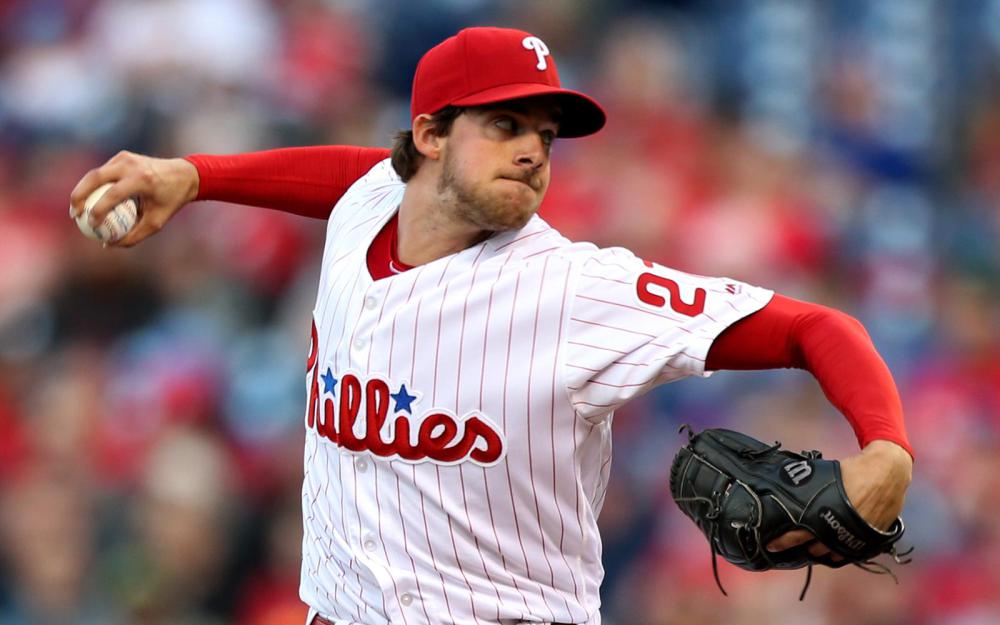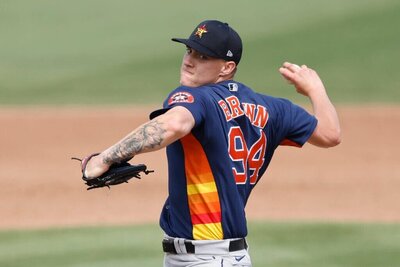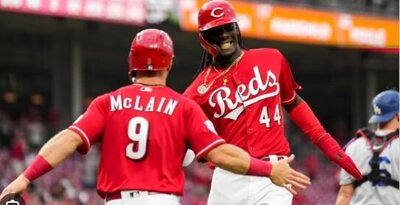Dereck Rodriguez: Rodriguez turned in one of his worst starts of the season against the Dodgers on Saturday, allowing five runs on six hits and three walks over just three innings of work. Saturday's poor start represents just the second time that Rodriguez has failed to last at least five innings in a start and the second time that he's allowed five earned runs this season, so it sits as one of the few blemishes on an otherwise strong rookie year. That being said, don't expect Rodriguez to perform at this level in the future unless he makes some adjustments over the offseason. Rodriguez has allowed a 39% hard hit rate and induced soft contact at a poor 12.6% rate this season to go along with a 31% line drive rate and 0.66 GB/FB ratio but posted a low .255 BABIP. To make matters worse, Rodriguez has benefited from an extremely low 1.5% home run rate carried by an unreasonable 3.9% HR/FB ratio (especially considering his high hard hit rate). Keep in mind that Rodriguez has pitched in less than 120 innings this season, so regression is likely to hit him hard next season without any adjustments.
Javier Baez: Baez went 0-4 against the Cardinals on Saturday. Baez (arguably) represents Yelich's only legitimate competition for the NL MVP award, and he's done so by slashing an impressive .291/.326/.559 entering Saturday's game. It's difficult to project Baez to repeat this level of performance next season though, as his peripherals aren't nearly as strong. Despite owning a solid but unspectacular 36.2% hard contact rate and average 12% IF/FB ratio, Baez has posted an unsustainable 17.2% HR/FB ratio (for reference: Christian Yelich owns a 47.2% hard hit rate and 17.3% HR/FB ratio) that isn't likely to carry over into next season. Even more concerning is Baez's plate discipline; opposing pitchers have avoided the strike zone more frequently than they ever have against Baez this year (37.7% zone rate) because they know he'll chase bad pitches, and that approach has proved to work well. Baez owns a poor 45.9% o-swing rate (second worst in the league behind Salvador Perez and worse than his mark from last season), and as a result makes contact just 68.5% of the time -- good for fourth worst in the major leagues. Essentially, Baez hasn't hit the ball often and hasn't hit the ball all that well when he does make contact. The 25-year-old should still be productive next season, but this year appears to be closer to a fluke than anything else.
Cole Hamels: Hamels tossed seven strong innings and allowed two runs (one earned) to go with eight strikeouts against the Cardinals on Saturday. Hamels endured a rough start to the season that saw him post a 4.36 first half ERA, but has posted a much stronger 3.15 ERA over the second half of the season. Hamels' overall ERA really doesn't paint the clearest picture of his season though, as it is influenced heavily by a horrendous July during which he allowed 21 earned runs over just 17 innings (exclude July and Hamels owns a 3.13 ERA for the year). Interestingly though, July might be a more representative performance of Hamels' season than any other month. For the season, Hamels has posted a poor 42.1% hard hit rate, and that number was actually higher in late April and mid-June than it was in July (Hamels' hard hit rate sat steadily in the mid 40s from essentially mid-April to mid-August). Combined with his fairly consistently high 25% line drive rate and low 6% infield/fly ball rate (0.84 GB/FB ratio) and Hamels pitched to what should've been high BABIPs. Instead, Hamels benefited from a better than league average BABIP in every month except for July (.424) including a notable .188 mark through four starts in May (Hamels' hard hit rate was actually down in May, but his best five game stretch that month still featured a poor 39.5% rate). Hamels made two notable changes in July that could have further influenced its poor numbers: he started using his fastball more frequently, and he altered his mechanics slightly. Hamels' four seam fastball usage jumped 8 points between June and July, but that is far from sufficient to explain his poor performance in the latter month because his four seam usage continued to increase through August and September (when his performance rebounded back to serviceable numbers). A better potential explanation for Hamels' poor July might be his mechanics; Hamels increased the distance from the center of the rubber at which he released the ball (horizontally) in each month preceding July, and it dipped back closer to the rubber after July. Hamels' horizontal release point was in fact at the highest level of his career in July before dipping back down in August. Hamels himself attributed some of his mid-season struggles to mechanical issues (in August), and his apparent mechanics changes support that claim. The other particularly interesting aspect about Hamels' season was his tremendous August that saw him post a 0.69 ERA over 39 innings. This is where Hamels' mechanics really came into play; beginning in August, Hamels' fastball and changeup (two of his most frequently used pitches) release points essentially converge both vertically and horizontally allowing him to mask his pitches to opposing batters (Hamels cited difficulty in hiding his pitches when he struggled this year, and that is consistent with his mechanics changes). August then predictably saw Hamels' fastball and changeup improve in overall performance, so a mechanical change certainly appears to be part of his regained success. Looking ahead to next season, Hamels will likely end up posting an ERA in the mid-to-high 3's with serviceable but not elite strikeout and walk numbers.
Joey Votto: Votto went 0-4 with a strikeout against the Pirates on Saturday. Though the .287/.420/.424 slash line that Votto has posted this season is far from bad, it represents less production than what owners have come to expect from the perennial MVP candidate -- particularly in the power department. Votto blames his depressed numbers at least partially on his launch angle -- claiming that he hasn't been lifting the ball frequently enough -- but it's not clear that his idea is backed up by the numbers. Line drives excluded, Votto has hit fewer balls in the air this year by about 8% compared to last season, but his 30.4% fly ball rate is around his career average doesn't seem like it should be much of a problem because almost all of those fly balls turned into line drives -- the most productive type of batted ball. The real problem (which, to be fair, is affected by his drop in fly ball rate and increase in line drive rate) appears to be Votto's unsustainably low 4.9% HR/FB ratio (1.9% home run rate) -- especially considering that Votto has posted an elite 40.9% hard hit rate, strong 9.2% soft contact rate, and plays his home games at the notoriously hitter friendly Great American Ballpark. Home run rate aside, Votto has been nothing but excellent this season by almost every metric. The 35-year-old ranks second in the league in line drive rate, sprays the ball all over the field, makes contact at a strong 84.8% rate, hits just 1% of his fly balls in the infield (league best), owns the best o-swing rate in the league, and walks more often than he strikes out. Votto's extra base hit and home run rates are likely to rise back up next season, and he should again be in the running for MVP in 2019.
Aaron Nola: Nola was impressive on Saturday as he accumulated eight strikeouts over seven shutout innings with four walks and two hits. Nola has been fantastic all season, and he should be viewed as a legitimate ace going into future seasons. Not only does Nola excel at limiting contact (he's posted an elite 73.8% contact rate this season), but the contact he did allow was extremely desirable. Nola has induced almost as much soft contact as he has hard contact this season (22.1% and 25.5%, respectively), and he's done it by making sure the pitches that hitters get the bat on are bad pitches. No pitcher posted a better ratio of o- and z-contact rates than Nola did this year, and it's fueled his Cy Young award campaign. In addition to his impressive contact quality profile, Nola also induced a desirable batted ball profile featuring a better than average line drive and ground ball heavy 1.02 GB/FB ratio. Expect Nola to continue his elite production into next season and get a shot at the Cy Young award this year.
This is just a small sample our daily analysis, join our member area for over 80 daily player updates sent to your inbox every morning and track your team online. Click here for details: https://www.insiderbaseball.com/baseballsample.htm Click here to register: http://www.fantistics.com/salesbaseball.php3



































